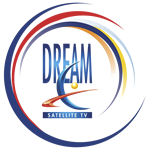
Digital television (DTV) is the transmission of television signals using digital encoding, in contrast to the earlier analog television technology which used analog signals. At the time of its development it was considered an innovative advancement and represented the first significant evolution in television technology since color television in the 1950s. Modern digital television is transmitted in high-definition television (HDTV) with greater resolution than analog TV. It typically uses a widescreen aspect ratio in contrast to the narrower format of analog TV. It makes more economical use of scarce radio spectrum space; it can transmit up to seven channels in the same bandwidth as a single analog channel, and provides many new features that analog television cannot. A transition from analog to digital broadcasting began around 2000. Different digital television broadcasting standards have been adopted in different parts of the world; below are the more widely used standards:

Digital Video Broadcasting (DVB) is a set of international open standards for digital television. DVB standards are maintained by the DVB Project, an international industry consortium, and are published by a Joint Technical Committee (JTC) of the European Telecommunications Standardisé Institute (ETSI), European Committee for Electrotechnical Standardization (CENELEC) and European Broadcasting Union (EBU).

Video on demand (VOD) is a media distribution system that allows users to access videos without a traditional video playback device and the constraints of a typical static broadcasting schedule. In the 20th century, broadcasting in the form of over-the-air programming was the most common form of media distribution. As Internet and IPTV technologies continued to develop in the 1990s, consumers began to gravitate towards non-traditional modes of content consumption, which culminated in the arrival of VOD on televisions and personal computers.
Digital radio is the use of digital technology to transmit or receive across the radio spectrum. Digital transmission by radio waves includes digital broadcasting, and especially digital audio radio services.
Digital cable is the distribution of cable television using digital data and video compression. The technology was first developed by General Instrument. By 2000, most cable companies offered digital features, eventually replacing their previous analog-based cable by the mid 2010s. During the late 2000s, broadcast television converted to the digital HDTV standard, which was incompatible with existing analog cable systems.
PrimeStar was a U.S. direct broadcast satellite broadcasting company formed in 1991 by a consortium of cable television system operators and GE Americom, the satellite arm of General Electric, collectively referred to as the PrimeStar Partners. PrimeStar was the first medium-powered DBS system in the United States but slowly declined in popularity with the arrival of DirecTV in 1994 and Dish Network in 1996.

Internet Protocol television (IPTV) is the delivery of television content over Internet Protocol (IP) networks. This is in contrast to delivery through traditional terrestrial, satellite, and cable television formats. Unlike downloaded media, IPTV offers the ability to stream the source media continuously. As a result, a client media player can begin playing the content almost immediately. This is known as streaming media.
VideoGuard, produced by NDS, is a digital encryption system for use with conditional access television broadcasting. It is used on digital satellite television systems - some of which are operated by News Corporation, which owned about half (49%) of NDS until its sale to Cisco in 2012. Since 2018 VideoGuard is improved and maintained by Synamedia. Its two most widely used implementations are Sky in the United Kingdom and Ireland and DirecTV in the United States, the former of which launched the digital version of the system in 1998.
Television encryption, often referred to as scrambling, is encryption used to control access to pay television services, usually cable, satellite, or Internet Protocol television (IPTV) services.
Conditional access or conditional access system is the protection of content by requiring certain criteria to be met before granting access to the content. The term is commonly used in relation to digital television systems and to software.
AlphaStar Digital Television was a direct-to-home satellite broadcasting service for the United States market developed by Canadian firm Tee-Comm Electronics. It was the first direct-to-home satellite broadcasting service in the United States to use the internationally accepted DVB-S broadcasting standard and used 39" satellite dish receivers. Its service launched in July 1996, but was discontinued completely by September 1997 with 40,000 subscribers as the company went through bankruptcy proceedings. The American assets of AlphaStar was used under the auspices of the Champion Telecom Platform which used to own the AlphaStar brand. AlphaStar would also have alleviated a shortage of Canadian satellite capacity by using foreign (US) satellite capacity to fill Canadian needs—indeed this was a requirement for the Canadian company to obtain its license from Canada to commence broadcasting. Tee-Comm, the parent company of AlphaStar had originally co-founded the partnership that created ExpressVu as technology supplier but later divested all interest in ExpressVu.
Compression Networks is a digital content delivery system developed by TV/COM International that evolved into the current DVB-S standard for satellite broadcasting. The system provided MPEG2 video, audio, signalling, enhanced program guide, and conditional access for pay-television services like AlphaStar.
Nova Telecommunications S.M.S.A. is a telecommunications company in Greece which provides broadband, television and fixed telephony. It also offers satellite services in Cyprus. It is traded on the Athens Exchange until its delisting in 2021.
Hughes Network Systems, LLC is a wholly owned subsidiary of EchoStar. It is headquartered in Germantown, Maryland and provides a high-speed satellite internet service, HughesNet has over 1.3 million subscribers in the Americas.
ETSI Satellite Digital Radio describes a standard of satellite digital radio. It is an activity of the European standardisation organisation ETSI.
High-definition television describes a television system providing a substantially higher image resolution than the previous generation of technologies. The term has been used since 1936; in more recent times, it refers to the generation following standard-definition television (SDTV), often abbreviated to HDTV or HD-TV. It is the current de facto standard video format used in most broadcasts: terrestrial broadcast television, cable television, satellite television and Blu-ray Discs.

Dream Satellite TV was the first all-digital Direct-To-Home (DTH) television broadcasting service via satellite in the Philippines. Broadcasting from the Dream Broadcast Center located at the Clark Special Economic Zone in Pampanga. Content is received from program providers, compressed and broadcast via Koreasat 5 in DVB-S and NTSC color format exclusively to its subscribers using the Integrated Receiver-Decoder and the Conax/Nagravision 3 Encryption System.

StarSat is a South African direct broadcast satellite television service that began broadcasting on 1 May 2010. StarSat is operated by On Digital Media, who were granted a pay-TV license by ICASA in September 2007. On Digital Media is currently 20% owned by Luxembourgish satellite operator SES and 20% owned by Chinese company StarTimes. StarSat's service is aimed at the LSM 6-9 demographic, targeting middle class viewers.
GS Group is the largest Russian developer and producer of set-top boxes for television. Since 1991 company has been conducting systematic research and development work and producing radio electronic equipment. Company products and technology concepts are used in satellite broadcasting projects NTV-PLUS, Tricolor TV, Platform HD etc. Total number of TV subscribers using set-top boxes produced by the Corporation in Russian Federation exceeds 7 million. In 2007 General Satellite became the main investor of the integral innovation project: "Technopolis GS: scientific and technological development territory", which is implemented in Gusev town, Kaliningrad Region.
Alpha Digital is a Greek former digital satellite pay TV platform owned by Alpha Digital Synthesis SA. Commissioned by Alpha TV and executive director Stathis Tsotsoros, the platform was launched on October 29, 2001 and shut down around a year later, September 11, 2002, due to financial difficulties and a low number of 40.000 subscribers. It was also funded by the Alexander S. Onassis Foundation.





